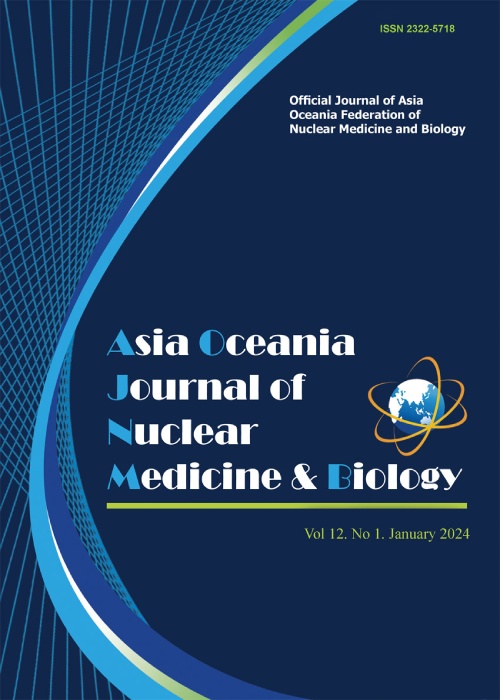Evaluation of the Reconstruction Parameters of Brain Dopamine Transporter SPECT Images Obtained by a Fan Beam Collimator: A Comparison with Parallel-hole Collimators
Author(s):
Article Type:
Research/Original Article (دارای رتبه معتبر)
Abstract:
Objective(s)
The purpose of this study was to examine the optimal reconstruction parameters for brain dopamine transporter SPECT images obtained with a fan beam collimator and compare the results with those obtained by using parallel-hole collimators.Methods
Data acquisition was performed using two SPECT/CT devices, namely a Symbia T6 and an Infinia Hawkeye 4 (device A and B) equipped with fan-beam (camera A-1 and B-1), low- and medium-energy general-purpose (camera A-2 and B-2), and low-energy high-resolution (camera A-3 and B-3) collimators. The SPECT images were reconstructed using filtered back projection (FBP) with Changs attenuation correction. However, the scatter correction was not performed. A pool phantom and a three-dimensional (3D) brain phantom were filled with 123I solution to examine the reconstruction parameters. The optimal attenuation coefficient was based on the visual assessment of the profile curve, coefficient of variation (CV) [%], and summed difference from the reference activity of the pool phantom. The optimal Butterworth filter for the 3D-brain phantom was also determined based on a visual assessment. The anthropomorphic striatal phantom was filled with 123I solution at striatum-to-background radioactivity ratios of 8, 6, 4, and 3. The specific binding ratio (SBR) of the striatum (calculated by the CT method) was used to compare the results with those of the parallel-hole collimators.Results
The optimal attenuation coefficients were 0.09, 0.11, 0.05, 0.05, 0.11, and, 0.10 cm-1 for cameras A-1, A-2, A-3, B-1, B-2, and B-3, respectively. The cutoff frequencies of the Butterworth filter were 0.32, 0.40, and 0.36 cycles/cm for camera A, and 0.46, 0.4 , and 0.44 cycles/cm for camera B, respectively. The recovery rates of the SBRmean with camera A were 51.2%, 49.4%, and 45.6%, respectively. The difference was not statistically significant. The recovery rates of the SBR with camera B were 59.2%, 50.7%, and 50.8%, respectively. Camera B-1 showed significantly high SBR values. 3Conclusion
As the findings indicated, the optimal reconstruction parameters differed according to the devices and collimators. The fan beam collimator was found to provide promising results with each device. Keywords:
Language:
English
Published:
Asia Oceania Journal of Nuclear Medicine & Biology, Volume:6 Issue: 2, Spring 2018
Pages:
120 to 128
magiran.com/p1833593
دانلود و مطالعه متن این مقاله با یکی از روشهای زیر امکان پذیر است:
اشتراک شخصی
با عضویت و پرداخت آنلاین حق اشتراک یکساله به مبلغ 1,390,000ريال میتوانید 70 عنوان مطلب دانلود کنید!
اشتراک سازمانی
به کتابخانه دانشگاه یا محل کار خود پیشنهاد کنید تا اشتراک سازمانی این پایگاه را برای دسترسی نامحدود همه کاربران به متن مطالب تهیه نمایند!
توجه!
- حق عضویت دریافتی صرف حمایت از نشریات عضو و نگهداری، تکمیل و توسعه مگیران میشود.
- پرداخت حق اشتراک و دانلود مقالات اجازه بازنشر آن در سایر رسانههای چاپی و دیجیتال را به کاربر نمیدهد.
In order to view content subscription is required
Personal subscription
Subscribe magiran.com for 70 € euros via PayPal and download 70 articles during a year.
Organization subscription
Please contact us to subscribe your university or library for unlimited access!


